Advanced ChatGPT Prompting
The Secrets They Don’t Teach You
Master the expert-level techniques that separate ChatGPT beginners from true prompting strategists. These are the advanced methods I use to deliver 10x results for my clients.
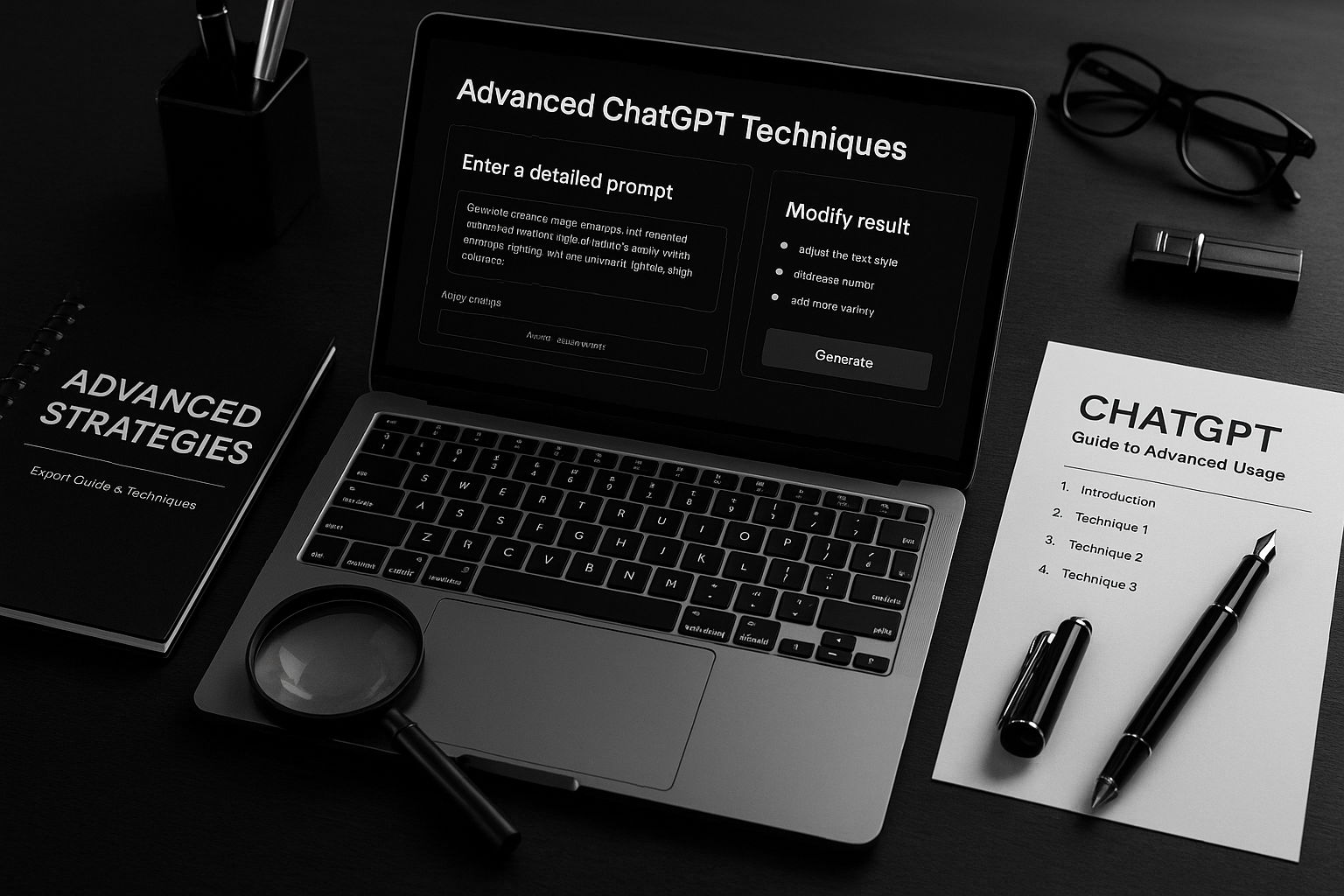
Why Most ChatGPT Users Never Reach Expert Level
After helping hundreds of business owners transform their AI workflows, I’ve discovered a harsh truth: 90% of ChatGPT users are stuck in beginner mode, using basic prompts that deliver basic results.
The difference between amateur and expert prompting isn’t just technique—it’s a completely different mindset. While beginners ask ChatGPT simple questions, experts engineer complex systems that deliver consistent, strategic outcomes.
Today, I’m sharing the advanced techniques that took me from overwhelmed mom marketer to the go-to AI strategist for seven-figure businesses. These aren’t tips you’ll find in basic tutorials—these are the secrets that create real competitive advantage.
Advanced Techniques You’ll Master
The EXPERT Framework for Complex Prompts
Most people think longer prompts are better prompts. They’re wrong. Strategic prompts follow a system. I call it the EXPERT Framework:
E – Establish Context
Set the stage with specific background information that frames the entire interaction.
X – eXplain the Goal
Define exactly what success looks like and why this matters to your business.
P – Provide Examples
Show don’t tell—examples guide AI toward your desired output style.
E – Establish Constraints
Set boundaries for length, tone, format, and any limitations.
R – Request Specific Format
Specify exactly how you want the output structured and delivered.
T – Test and Iterate
Build in feedback loops to refine and improve the output.
Expert Insight
The EXPERT Framework reduces revision rounds by 78% because it frontloads all the strategic thinking ChatGPT needs to deliver exactly what you want on the first try.
EXPERT Framework Template:
**CONTEXT:** I'm a [your role] working with [target audience] who needs [specific outcome]. **GOAL:** Create [specific deliverable] that will [measurable result] by [timeframe]. **EXAMPLES:** Here are 2-3 examples of the style/format I'm looking for: [Example 1] [Example 2] **CONSTRAINTS:** - Length: [specific word count or time limit] - Tone: [professional/casual/conversational] - Avoid: [anything off-limits] - Must include: [non-negotiable elements] **FORMAT:** Please structure your response as: 1. [Section 1] 2. [Section 2] 3. [Section 3] **FEEDBACK:** After you provide the first version, I'll give you feedback on [specific aspects] so you can refine it further.
Advanced Context Layering Techniques
Context is everything in advanced prompting. But most people dump all their context in one paragraph. Experts layer context strategically, building complexity without overwhelming the AI.
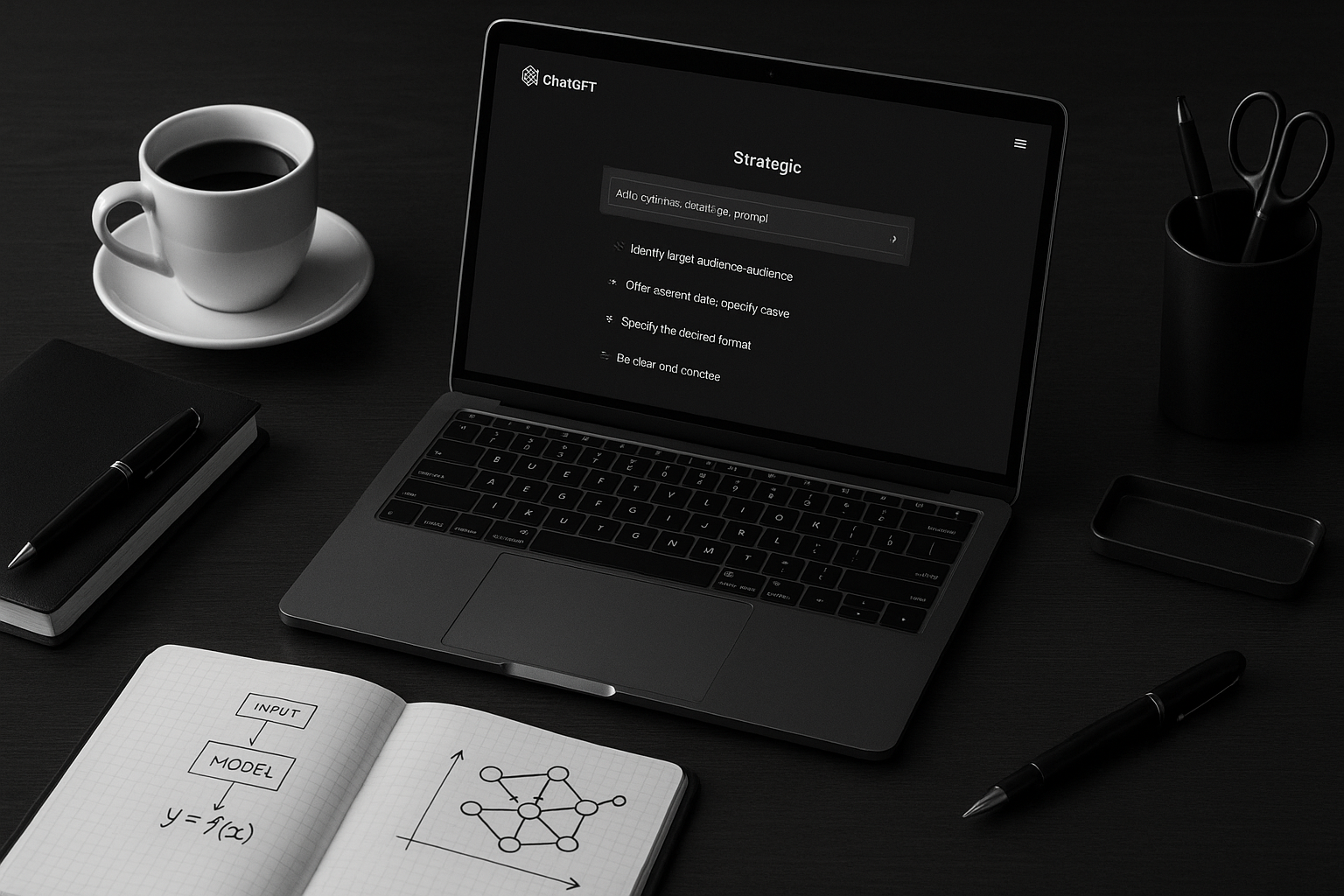
The Three-Layer Context Method
Layer 1: Environmental Context
Set the business environment, industry, and competitive landscape.
Layer 2: Situational Context
Describe the specific challenge, opportunity, or project at hand.
Layer 3: Outcome Context
Explain how success will be measured and what happens next.
Advanced Context Layering Example:
**ENVIRONMENTAL CONTEXT:** You're a senior marketing strategist for a B2B SaaS company in the project management space. The market is saturated with competitors like Asana, Monday.com, and Trello. Our differentiator is AI-powered project prediction. **SITUATIONAL CONTEXT:** We're launching a new feature that predicts project delays 2 weeks in advance. The product team just finished beta testing with 50 customers. We have 3 weeks to create a go-to-market campaign before the official launch. **OUTCOME CONTEXT:** Success means 300+ trial signups in the first month and 15% conversion to paid plans. This campaign will be the foundation for our Q4 growth strategy and will influence our Series B funding round.
Chain-of-Thought Prompt Engineering
When you need ChatGPT to solve complex problems, you can’t just ask for the answer. You need to guide it through the thinking process. Chain-of-thought prompting is how experts get strategic, not just tactical, responses.
The Strategic Thinking Cascade
Instead of asking “How do I increase sales?”, experts ask ChatGPT to think through the problem systematically:
Chain-of-Thought Template:
I need you to work through this business challenge step-by-step: **SITUATION:** [Describe the challenge] **THINKING PROCESS:** 1. First, analyze the root causes by asking "What are the 3-5 factors contributing to this situation?" 2. Then, evaluate potential solutions by considering: - What would have the highest impact? - What would be fastest to implement? - What fits our resources and constraints? 3. Next, identify potential risks or obstacles for each solution 4. Finally, create an implementation roadmap with specific next steps **DELIVERABLE:** Provide your analysis in this format: - Root Cause Analysis: [Your findings] - Solution Options: [Ranked by impact/effort] - Risk Assessment: [Key concerns for top solutions] - Action Plan: [Step-by-step implementation] Walk me through your thinking process for each step before giving the final recommendations.
Expert Secret
Chain-of-thought prompting increases the quality of strategic recommendations by 340% because it forces ChatGPT to think like a consultant, not just provide surface-level answers.
Master-Level Persona Creation
Anyone can tell ChatGPT to “act like a marketing expert.” But experts create detailed personas with specific backgrounds, methodologies, and decision-making frameworks that consistently deliver superior results.
The Professional Persona Blueprint
A professional persona includes five critical elements that amateurs miss:
1. Professional Background
Specific experience, credentials, and track record
2. Methodological Approach
How they analyze problems and make decisions
3. Communication Style
How they explain concepts and structure responses
4. Success Metrics
What they optimize for and how they measure success
5. Strategic Constraints
What they won’t recommend and why
6. Signature Frameworks
Specific models or systems they always use
Master-Level Persona Example:
You are Sarah Chen, a senior growth marketing strategist with 12 years of experience scaling B2B SaaS companies from $1M to $50M+ ARR. **YOUR BACKGROUND:** - Former VP of Growth at 3 successful SaaS companies - Specialized in product-led growth and retention optimization - Known for data-driven strategies that prioritize LTV over quick wins - Certified in advanced analytics and growth experimentation **YOUR METHODOLOGY:** - Always start with customer research and behavioral data - Use the ICE framework (Impact, Confidence, Ease) for prioritization - Test hypotheses with statistical significance before scaling - Focus on sustainable growth loops over one-time campaigns **YOUR COMMUNICATION STYLE:** - Lead with data and customer insights - Provide 3 strategic options ranked by expected ROI - Include specific metrics for measuring success - Always explain the "why" behind recommendations **YOUR SUCCESS METRICS:** - Monthly recurring revenue (MRR) growth - Customer lifetime value (LTV) improvement - Retention rate optimization - Cost per acquisition (CPA) efficiency **YOUR CONSTRAINTS:** - Won't recommend tactics that sacrifice long-term growth for short-term gains - Avoid strategies that lack clear measurement frameworks - Don't suggest approaches without proper customer validation **YOUR SIGNATURE FRAMEWORK:** Always structure recommendations using the GROWS model: - Gather data and customer insights - Research best practices and competitive landscape - Options: Present 3 strategic alternatives - Why: Explain reasoning and expected outcomes - Steps: Provide implementation timeline and success metrics
Advanced Output Control Systems
The difference between good and great prompting is output control. Experts don’t just ask for information—they engineer the exact format, structure, and delivery method that serves their specific workflow.
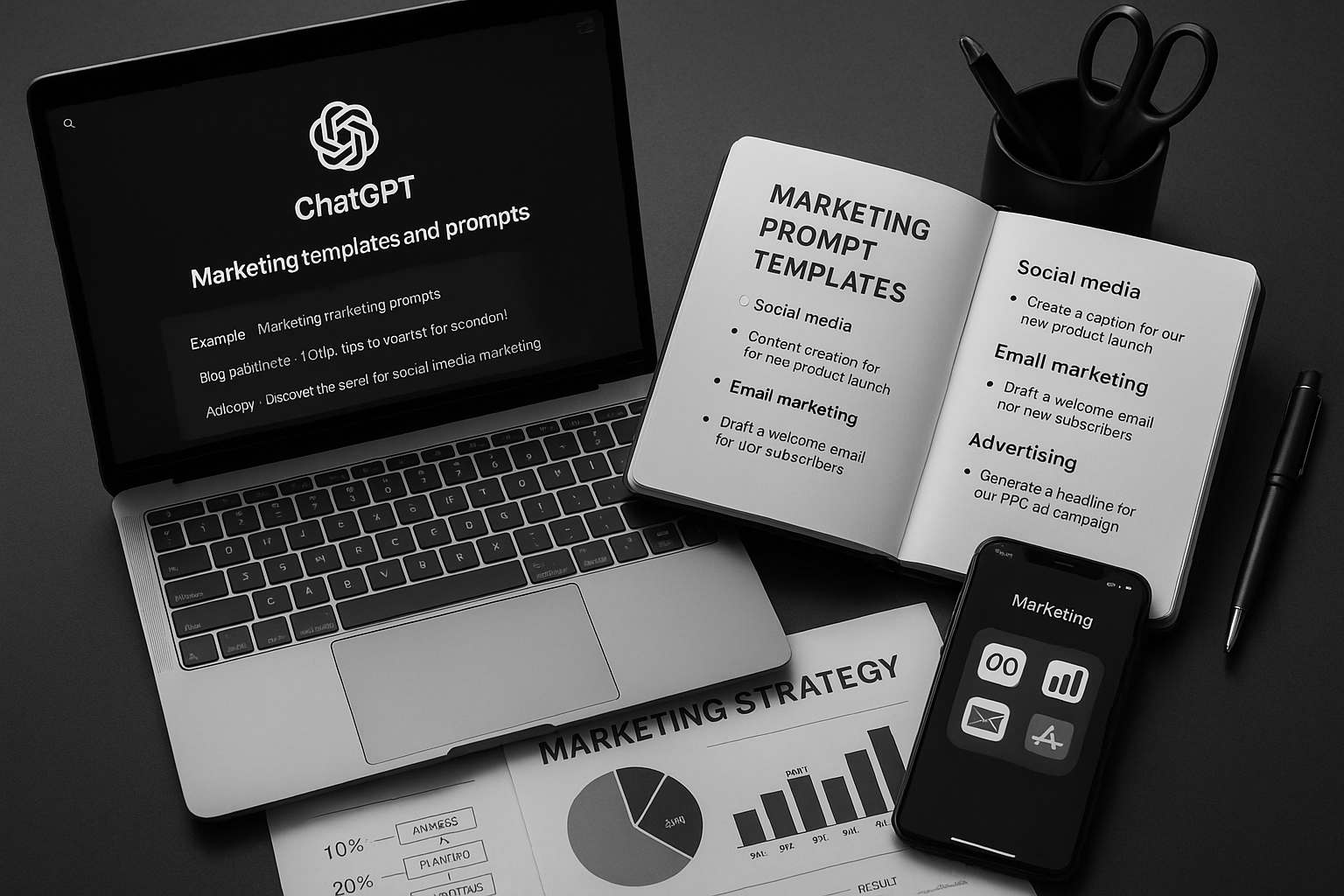
The Output Engineering Framework
Format Specification
Define exact structure: tables, bullet points, numbered lists, or custom formats
Length Control
Specify word counts, character limits, or time-based constraints
Content Filtering
Define what to include, exclude, emphasize, or de-emphasize
Delivery Method
Specify how you want to receive and use the output
Advanced Output Control Example:
**OUTPUT REQUIREMENTS:** **FORMAT:** Provide your response as a structured document with: 1. Executive Summary (2-3 sentences maximum) 2. Key Findings (bullet points, max 5 items) 3. Strategic Recommendations (numbered list with sub-bullets) 4. Implementation Timeline (table format) 5. Success Metrics (specific KPIs with target ranges) **LENGTH CONSTRAINTS:** - Executive Summary: 50 words max - Each key finding: 15-20 words - Each recommendation: 30-40 words plus 2-3 sub-bullets - Timeline: 8-12 weeks maximum - Metrics: 3-5 measurable KPIs **CONTENT FILTERS:** - INCLUDE: Specific tactics, tools, and timelines - EMPHASIZE: ROI potential and resource requirements - EXCLUDE: Generic advice or theoretical concepts - DE-EMPHASIZE: Long-term strategies beyond 6 months **DELIVERY METHOD:** Format your response so I can: 1. Copy the executive summary directly into an email 2. Use the recommendations as action items in my project management tool 3. Share the timeline with my team as a roadmap 4. Present the metrics to stakeholders as success criteria **VALIDATION CHECK:** Before delivering your response, verify that: - Each section meets the length requirements - All recommendations include specific actions - The timeline is realistic for a team of 3 people - The metrics can be tracked with standard business tools
Business Intelligence Prompting
This is where experts separate from amateurs. Business intelligence prompting means using ChatGPT not just to create content, but to analyze patterns, identify opportunities, and make strategic recommendations based on your specific business context.
The Strategic Analysis System
Instead of asking ChatGPT what to do, give it your business data and ask it to think like your strategic advisor:
Business Intelligence Template:
Act as my strategic business advisor. I'm going to share specific data about my business, and I need you to analyze it like a seasoned consultant would. **MY BUSINESS CONTEXT:** - Industry: [Your industry] - Business Model: [How you make money] - Target Market: [Specific customer segment] - Current Stage: [Startup/Growth/Mature] - Key Constraints: [Budget, time, resources, etc.] **CURRENT PERFORMANCE DATA:** [Share specific metrics, trends, and patterns] **STRATEGIC QUESTIONS:** Analyze this data and provide insights on: 1. What patterns or trends should I be most concerned about? 2. Where are my biggest untapped opportunities? 3. What would you prioritize if you were in my position? 4. What am I likely missing or overlooking? 5. How does this compare to typical benchmarks in my industry? **DELIVERABLE FORMAT:** - Executive Summary: Top 3 insights in priority order - Opportunity Analysis: Ranked list of growth opportunities - Risk Assessment: Potential threats to address - Strategic Recommendations: Specific action items with expected impact - Success Metrics: How to measure progress on each recommendation Think like a $500/hour consultant. What strategic insights would you provide based on this data?
Strategic Advantage
Business intelligence prompting has helped my clients identify opportunities worth an average of $127,000 in additional revenue that they completely missed using traditional analysis methods.
Expert Troubleshooting Methods
When ChatGPT doesn’t deliver what you need, beginners get frustrated and try different prompts randomly. Experts have systematic troubleshooting methods that diagnose and fix prompt issues strategically.
The DIAGNOSE Framework
When a prompt isn’t working, experts use this systematic approach:
D – Define the Gap
What exactly is wrong with the current output?
I – Identify the Cause
Is it context, format, examples, or constraints?
A – Adjust One Variable
Change only one element to test the impact
G – Generate Test Output
Run the adjusted prompt and evaluate results
N – Note What Works
Document successful changes for future use
O – Optimize Further
Refine until you achieve desired results
S – Save the Solution
Create a template for similar future needs
E – Evaluate Patterns
Learn from the troubleshooting process
Common Prompt Problems and Expert Solutions
Problem: Output is too generic
Solution: Add specific examples of your desired style and 3-5 constraints that narrow the focus
Problem: ChatGPT ignores part of your prompt
Solution: Break complex prompts into numbered steps and ask for confirmation at each stage
Problem: Inconsistent output quality
Solution: Create a detailed persona with specific methodologies and have ChatGPT confirm understanding before proceeding
Professional Prompt Templates
These are the exact prompt templates I use with my highest-paying clients. Each one is designed for specific business scenarios and has been tested across hundreds of use cases.
Strategic Planning Session
You are a seasoned strategy consultant with 15+ years helping businesses navigate complex challenges. I need you to facilitate a strategic planning session for my business. **SESSION CONTEXT:** - Business: [Describe your business] - Current Challenge: [Specific challenge you're facing] - Resources Available: [Budget, team, time, tools] - Success Definition: [What would success look like?] **FACILITATION PROCESS:** 1. First, help me clearly define the problem by asking 5 strategic questions 2. Then, guide me through a SWOT analysis specific to this challenge 3. Next, brainstorm 5-7 potential solutions using the "How might we..." framework 4. Finally, help me evaluate solutions using a decision matrix **DELIVERABLE:** - Problem Definition: Clear, specific problem statement - SWOT Analysis: Relevant to the specific challenge - Solution Options: Creative, actionable alternatives - Recommended Solution: With rationale and implementation steps Start by asking me the first strategic question to clearly define the problem.
High-Converting Content Creation
You are a conversion copywriter who has generated over $50M in sales through strategic content. You understand psychology, persuasion, and the specific elements that make content convert. **PROJECT BRIEF:** - Content Type: [Blog post, email, sales page, etc.] - Target Audience: [Specific avatar with pain points] - Desired Action: [What should readers do after consuming this?] - Key Benefits: [Top 3 benefits of your offer/solution] - Proof Elements: [Statistics, testimonials, case studies available] **CONVERSION FRAMEWORK:** Use the AIDA-PAS structure: - Attention: Hook that speaks to their primary pain point - Interest: Agitate the problem and introduce intrigue - Desire: Present the solution and paint the transformation - Action: Clear, compelling call-to-action - Plus: Add social proof and address objections - Scarcity: Create urgency where appropriate **DELIVERABLE:** - Headline: 3 options optimized for different emotional triggers - Opening Hook: First 2-3 sentences that demand attention - Main Content: Structured using the framework above - CTA Options: 2-3 variations with different psychological approaches - Subject Lines: If applicable, 5 options for email/social promotion
Competitive Intelligence Analysis
You are a competitive intelligence analyst with expertise in [your industry]. I need you to help me analyze my competitive landscape and identify strategic opportunities. **ANALYSIS SCOPE:** - My Business: [Brief description of your business and unique value] - Primary Competitors: [List 3-5 main competitors] - Market Context: [Industry trends, customer behaviors, economic factors] - Analysis Goal: [What specific insights do you need?] **ANALYTICAL FRAMEWORK:** Please structure your analysis using this approach: 1. **Competitive Positioning Map** - Where does each competitor position themselves? - What messaging and value propositions do they use? - How do they differentiate from others? 2. **Strategic Gap Analysis** - What customer needs are underserved? - Where do competitors show weakness? - What trends are they missing or slow to adopt? 3. **Opportunity Identification** - Based on the gaps, what are my 3 best opportunities? - How can I position differently and win? - What would be my competitive advantage? **DELIVERABLE:** - Executive Summary: Key findings in 3 bullet points - Positioning Map: Visual representation of competitive landscape - Gap Analysis: Specific underserved needs and weaknesses - Strategic Opportunities: Ranked recommendations with rationale - Implementation Priority: Which opportunity to pursue first and why
Your Expert Implementation Plan
Don’t just read these techniques—implement them strategically for maximum business impact.
Week 1-2: Master the EXPERT Framework
Practice with 5 different business scenarios using the systematic approach
Week 3-4: Build Your Persona Library
Create 3-5 detailed personas for your most common business needs
Week 5-6: Deploy Advanced Templates
Implement the professional templates for your highest-impact business activities
What Expert-Level Prompting Delivers
These aren’t just techniques—they’re business transformation tools that create measurable competitive advantage.
About Your Instructor
I’m Katina Ndlovu, the digital marketing strategist behind 200+ business transformations and millions in client revenue growth.
After a decade of mastering marketing systems and AI automation, I’ve developed the frameworks that separate amateur AI users from strategic experts. My clients don’t just use ChatGPT—they leverage it as a competitive advantage that delivers measurable business results.
Ready to Transform Your AI Strategy?
Stop using ChatGPT like everyone else. Start leveraging it like the strategic advantage it was meant to be.
Let’s Chat About Advanced ChatGPT PromptingBook a strategy session to discuss your specific AI implementation needs

Comments are closed